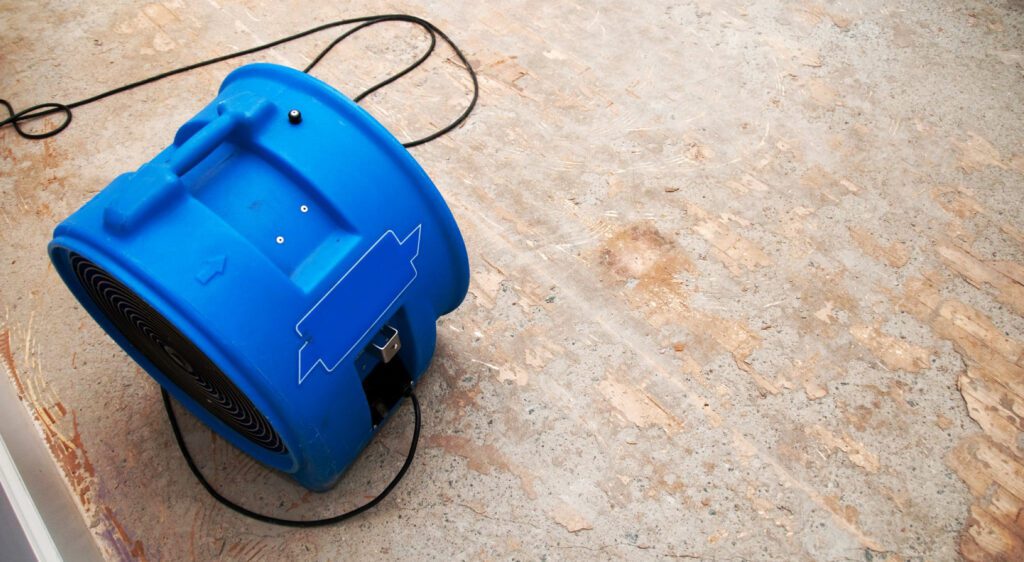But how long do you need to keep it running? Unfortunately, the answer to this question is often complicated.
Sometimes, the guidelines that come with the dehumidifier will give you a specific answer. But generally speaking, if your home smells mildewy or damp after a water leak, then it’s likely time to run the machine for at least 24 hours.
Running the unit for up to three days right away will usually clear out any potential mould problems. That is because the dryer air blows through your home, drying out any moisture that might be lurking.
However, suppose the air quality is not good enough. In that case, you should run the dehumidifier for up to three days before looking for additional solutions, such as repairing/tiling the ceiling or walls.
If you’re still having problems with mildew after doing this, then I would suggest contacting a professional to see about removing the mildew and wet wood from your ceilings and walls.
The amount of time it takes to run the dehumidifier after a water leak is an essential factor in determining the effectiveness of your drying plan. If you don’t take enough time to let the air dry, it could further damage your home’s structure.
How Does A Dehumidifier Work?
A dehumidifier is an appliance used to remove moisture from the air. There are three basic types of dehumidifiers: refrigerant, desiccant and the whole house. This article will focus on the refrigerant type, which is the most common.
The unit contains a compressor, condenser, evaporator and fan. In addition, the coolant inside the machine cycles through these chambers to remove moisture from the air.
During this process, it absorbs heat from the air. As a result, the machine can cool down a room. In addition, because water also absorbs heat, it can evaporate, making the machine even more effective at removing impurities from the air.
Finally, since the water inside the condenser will be re-condensed before entering the evaporator, it can easily be recycled back into the cooling cycle.
These chambers are all connected with a closed-loop system. It means that you don’t have to worry about any leakage or spills.
Most dehumidifiers will have a built-in timer that automatically turns them off after about 24 hours. That is because the unit will continue to work at night, drawing moisture from the air.
Basically, by properly setting up your dehumidifier according to the manufacturer’s instructions, you can avoid mildew odours and other contaminants that might infiltrate your home after water damage.
How Many Dehumidifiers Can I Have?
The number of dehumidifiers you need will depend on the size of your home, whether it’s built-up or not, and how contaminated it is. For example, the usual recommendation is one dehumidifier for every 1,000 square feet. But in some cases, two might be better.
If you have a large home (with more than 4,000 square feet), you may need four dehumidifiers to remove moisture effectively. First, you can measure your space by using a tape measure or yardstick. Then you’ll need to find the square footage on the label of your potential appliance.
An older home likely needs more than one dehumidifier. That is because older homes are less insulated and have higher amounts of cellulose in their walls.
Cellulose absorbs moisture from the air, making it a breeding ground for mildew odours and other contaminants. In addition, older homes don’t have insulation around their ceilings, making it easier for water to leak through the walls or floorboard.
SUMMARY
Dehumidifiers help keep your home smelling fresh and hygienic. However, if you don’t know what you’re doing, you might end up with wet carpets, wood rot and worse. For best results, follow the steps listed above.
First, you’ll want to properly set up your dehumidifier according to your manufacturer’s instructions. You’ll then want to run the machine for 24-36 hours after a water leak occurs. That will help remove any excess moisture that could lead to mildew or other contaminants.
And finally, if you’re still having problems with mildew odours, then you might need more than one appliance. You can also consider hiring a professional to see about removing the mildew and wet wood from your ceilings and walls.







